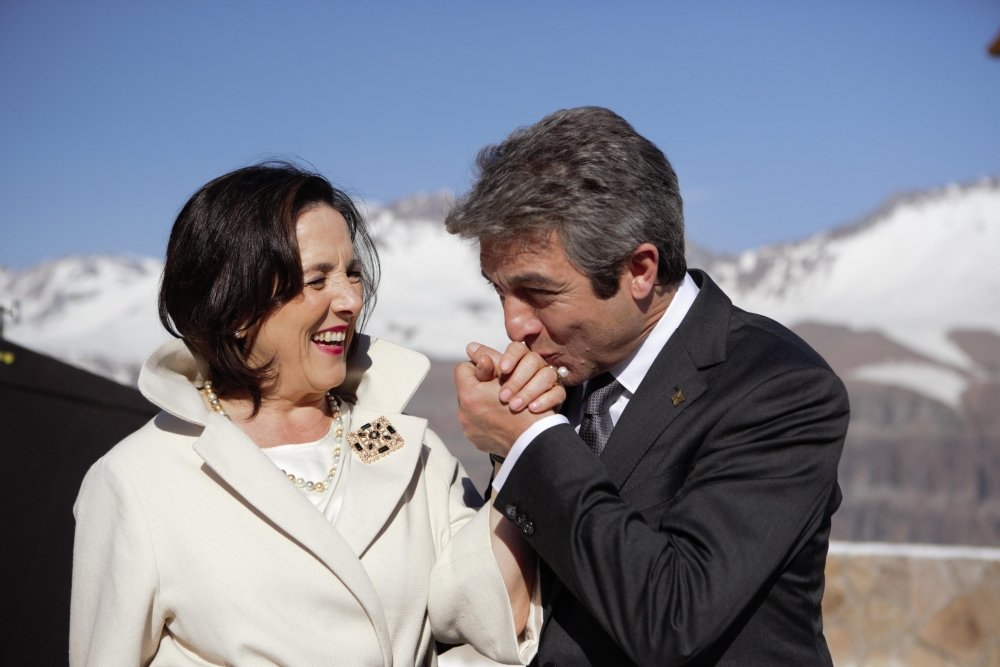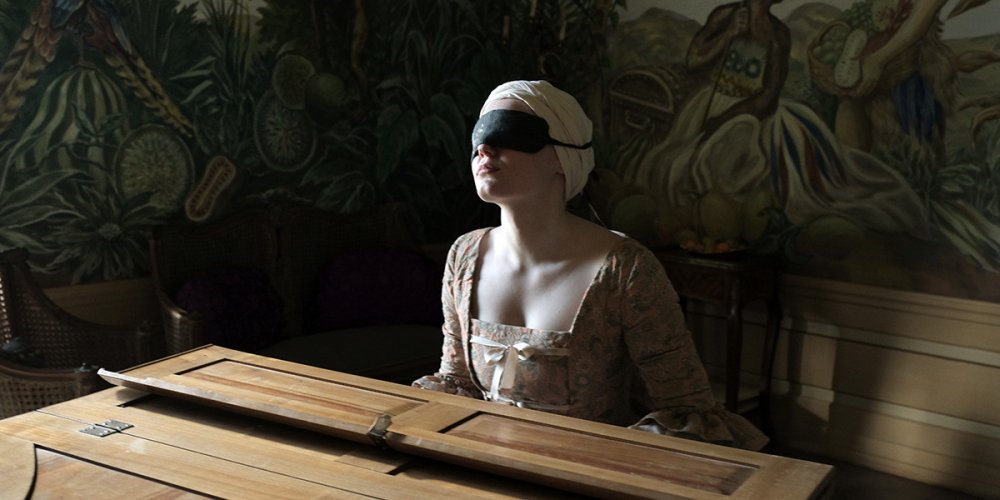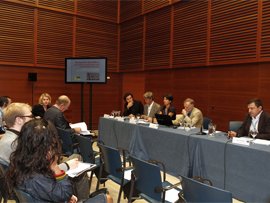San Sebastian at the end of September is a fabulous place to be – it often has great Indian summer weather – but the film festival has limitations it’s worth laying out here before we deal with the films themselves. The only way to assess any festival completely is, of course, to see the bulk of the programme, but most critics can’t afford to be present for the whole time (except at Cannes, which is undeniably worth the duration), so reports are nearly always partial. The city is a 90-minute drive from Bilbao airport, which takes more time away from viewing films, so that my Sunday to Friday trip here, for instance, added up to only four full days of viewing.
The 64th San Sebastián International Film Festival ran 22-30 September 2017.
On the other hand it’s an A-listed festival, the most important in the Spanish calendar. It is hugely popular with the local and regional population. Queues for films shown in the enormous Kursaal 1 cinema stretch all along the seafront. I am reliably informed that it’s a largely conservative crowd, but it’s one that will sit still, for instance, for a 152-minute Romanian film – Pororoca, about a man driven to distraction by the disappearance of his daughter from a park when she was under his supervision – and applaud it handsomely at the end. None the less they expect purely entertaining films to be strongly represented.
In terms of getting the best films from around the world, San Sebastian is in a queue behind Venice and Toronto. That lowers critics’ expectations, and since this has not been a vintage year for film culture anywhere, my hopes of seeing great films here were not high. Add to that the reality that the festival coming at the end of September means that many films in the popular ‘Pearls’ programme have been shown elsewhere, I wondered if I would find enough to fill even four days.
Happily that anxiety was unwarranted. I didn’t see even one really bad new film, though I did see two episodes of a very ordinary new television series set in 16th-century Spain called Plague, about which there was much prior Spanish enthusiasm. Its closest UK equivalent would be, say, the BBC’s routine costumer Musketeers series but with added bubonic special effects.
The films were much better. The first I saw was Austrian director Barbara Albert’s Mademoiselle Paradis, itself a period piece set in rococo Vienna, which offers many surprises in the often ironic twists of fate undergone by its titular lead, Theresia (played by Romanian actor Maria-Victoria Dragus), a blind teenager prodigiously talented as a pianist, so much so that she’s been granted a pension by the Austrian King.
Searching for ways to make ‘Resi’ more marriageable, her socially ambitious parents stumble upon Dr. Franz Mesmer, whose treatments prove effective to a degree with the downside that the more Resi’s sight improves, the more her piano playing declines. Many historico-political realities are touched on and outlined with great skill, deftness and even some humour, proving that Albert is a real talent.
Constantin Popescu’s Pororoca, the disappearing-child film I mentioned, is very much in the recent Romanian tradition of slow-burn, intently observed realist moral tales that involve, at some point, the police. The title comes from the Amazonian tidal bore of waves that gain in size and momentum as they move inland. A more conventional version of this kind of cinema than, say, Cristi Puiu’s work, the film uses long takes less effectively, dwelling with sympathy on the agony of guilt suffered by the father, Tudor (Bogdan Dumitrache), rather than offering clues as to why he is the kind of guy he is other (though Dumitrache’s performance cannot be faulted and it won him the Best Actor prize).
A similar burning parental agony inspires Argentinian director Diego Lerman’s A Sort of Family in which Malena (Spanish actor Barbara Lennie), a Buenos Aires doctor who has arranged to adopt a child, finds all kinds of barriers to her becoming the baby’s legal parent appear the minute the child is born. She summons her husband, who thinks the whole thing is a scam, to help her sort it out. I don’t want to give more of the story away, but this emotionally wrenching film stirs up the many complexities of adoption crises as any powerful, occasionally overwrought melodrama should.
Where mother love is concerned, however, few films could compete with Spanish director Antonio Mendez Esparza’s uncompromising Life and Nothing More, an African-American life-on-the-verge-of-poverty drama set in Florida that is blessed with a heartbreaking performance by Regina Williams as Regina, a thirtysomething waitress and mother of Andrew (Andrew Bleechington), a troubled 14-year-old boy already in the grip of the US Justice system. Regina sometimes takes out her frustrations on the boy, thereby increasingly his sense of isolation. Things get more complicated when Regina has an affair with smooth-talking Robert (Robert Williams). If I try to imagine what a fiction film directed by the great documentarian Frederick Wiseman might look like, this low-budget gem comes pretty close.
I liked Marine Francen’s debut feature The Sower, winner of the New Directors’ prize, but not as much as I wanted to. It’s a portrait of the women of a 19th-century Haut Savoie village, remote from the valley towns and villages, who’ve seen all the men of the village accused of sedition and carted off by soldiers in the wake of Louis Napoleon’s 1851 coup d’état.
Its particular focus is on the lovely, virginal Violette (Pauline Burlet). After a year or so of manlessness, she and her female friends decide that, should a man come along, they will all share him sexually and have children by him. It is far too easy to guess what happens next, all apparently based on a long-suppressed memoir from the time. It’s a gorgeously shot quiet burn of a film but to me it came across too much like a lost film of the 1970s, mild softcore meets folk fantasy. I doubt that the real peasant women of the time could look so consistently radiant as the actors here, but the film is compelling and it does not lack restraint.

Santiago Mitre’s The Summit
Probably the least impressive film I saw was Santiago Mitre’s political potboiler The Summit, which starred the always wonderful Ricardo Darín, but in the kind of overblown super-Machiavellian role that might have better suited Alec Baldwin – an interior conference drama of tough besuited men and elegant hysterical women. If you’ll forgive the paradox, it was too po-faced to take seriously.
A more intriguing South American thriller was the Eroski Youth Prize-winner Killing Jesus, from Colombian director Laura More, which draws on her own autobiography – her father was murdered just like the lead character’s father is in this drama. Hip, dope-smoking student Paula (Nathasha Jarmillo) is devastated when her father, an academic of strong leftist opinions, is gunned down by an assassin while she is in the car. She sees the killer’s face and is determined to get close enough to him to get her revenge. Out of this grows a strange love-hate affair with Jesus (Giovany Rodriguez) that gives us a vivid insight into Colombian street life, though the story unfolds predictably enough.
Fans of the long-touted ‘worst film ever made’ – Tommy Wiseau’s The Room – will have to forgive my ignorance. I knew nothing about the mysterious millionaire or the hilariously monstrous vanity project he made until I saw James Franco’s tribute ‘making-of’ drama The Disaster Artist. This is the kind of movie that’s really tricky to pull off, since it has to make us care about the oddball Wiseau (Franco) and his friendship with his normal, handsome wannabe actor buddy Greg Sestero (James’s younger brother Dave Franco) while offering every preposterous thing they do up for laughs. It took me a while to get into its Sideways meets Ed Wood vibe but once I was in I was howling along with the press screening crowd, who adored it. Like I said, San Sebastian is a generous place, where at times even the critics behave like fans.
-
The Digital Edition and Archive quick link
Log in here to your digital edition and archive subscription, take a look at the packages on offer and buy a subscription.






